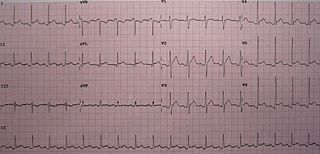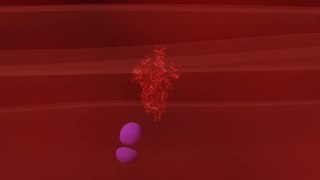Related Research Articles

Vaccination is the administration of a vaccine to help the immune system develop immunity from a disease. Vaccines contain a microorganism or virus in a weakened, live or killed state, or proteins or toxins from the organism. In stimulating the body's adaptive immunity, they help prevent sickness from an infectious disease. When a sufficiently large percentage of a population has been vaccinated, herd immunity results. Herd immunity protects those who may be immunocompromised and cannot get a vaccine because even a weakened version would harm them. The effectiveness of vaccination has been widely studied and verified. Vaccination is the most effective method of preventing infectious diseases; widespread immunity due to vaccination is largely responsible for the worldwide eradication of smallpox and the elimination of diseases such as polio and tetanus from much of the world. However, some diseases, such as measles outbreaks in America, have seen rising cases due to relatively low vaccination rates in the 2010s – attributed, in part, to vaccine hesitancy. According to the World Health Organization, vaccination prevents 3.5–5 million deaths per year.

Cowpox is an infectious disease caused by the cowpox virus (CPXV). It presents with large blisters in the skin, a fever and swollen glands, historically typically following contact with an infected cow, though in the last several decades more often from infected cats. The hands and face are most frequently affected and the spots are generally very painful.

Mumps is a viral disease caused by the mumps virus that is preventable with vaccination. Initial symptoms of mumps are non-specific and include fever, headache, malaise, muscle pain, and loss of appetite. These symptoms are usually followed by painful swelling of the parotid glands, called parotitis, which is the most common symptom of a mumps infection. Symptoms typically occur 16 to 18 days after exposure to the virus and resolve within two weeks. About one third of infections are asymptomatic.

The smallpox vaccine is the first vaccine to have been developed against a contagious disease. In 1796, British physician Edward Jenner demonstrated that an infection with the relatively mild cowpox virus conferred immunity against the deadly smallpox virus. Cowpox served as a natural vaccine until the modern smallpox vaccine emerged in the 20th century. From 1958 to 1977, the World Health Organization (WHO) conducted a global vaccination campaign that eradicated smallpox, making it the only human disease to be eradicated. Although routine smallpox vaccination is no longer performed on the general public, the vaccine is still being produced to guard against bioterrorism, biological warfare, and mpox.

Vaccinia virus is a large, complex, enveloped virus belonging to the poxvirus family. It has a linear, double-stranded DNA genome approximately 190 kbp in length, which encodes approximately 250 genes. The dimensions of the virion are roughly 360 × 270 × 250 nm, with a mass of approximately 5–10 fg. The vaccinia virus is the source of the modern smallpox vaccine, which the World Health Organization (WHO) used to eradicate smallpox in a global vaccination campaign in 1958–1977. Although smallpox no longer exists in the wild, vaccinia virus is still studied widely by scientists as a tool for gene therapy and genetic engineering.

Myocarditis, also known as inflammatory cardiomyopathy, is an acquired cardiomyopathy due to inflammation of the heart muscle. Symptoms can include shortness of breath, chest pain, decreased ability to exercise, and an irregular heartbeat. The duration of problems can vary from hours to months. Complications may include heart failure due to dilated cardiomyopathy or cardiac arrest.

Pericarditis is inflammation of the pericardium, the fibrous sac surrounding the heart. Symptoms typically include sudden onset of sharp chest pain, which may also be felt in the shoulders, neck, or back. The pain is typically less severe when sitting up and more severe when lying down or breathing deeply. Other symptoms of pericarditis can include fever, weakness, palpitations, and shortness of breath. The onset of symptoms can occasionally be gradual rather than sudden.

Vaccine hesitancy is a delay in acceptance, or refusal, of vaccines despite the availability of vaccine services and supporting evidence. The term covers refusals to vaccinate, delaying vaccines, accepting vaccines but remaining uncertain about their use, or using certain vaccines but not others. The scientific consensus that vaccines are generally safe and effective is overwhelming. Vaccine hesitancy often results in disease outbreaks and deaths from vaccine-preventable diseases. Therefore, the World Health Organization characterizes vaccine hesitancy as one of the top ten global health threats.
Modified vaccinia Ankara (MVA) is an attenuated (weakened) strain of the vaccinia virus. It is being used as a vaccine against smallpox and mpox, having fewer side effects than smallpox vaccines derived from other poxviruses.

Acute pericarditis is a type of pericarditis usually lasting less than 6 weeks. It is the most common condition affecting the pericardium.
Immunization during pregnancy is the administration of a vaccine to a pregnant individual. This may be done either to protect the individual from disease or to induce an antibody response, such that the antibodies cross the placenta and provide passive immunity to the infant after birth. In many countries, including the US, Canada, UK, Australia and New Zealand, vaccination against influenza, COVID-19 and whooping cough is routinely offered during pregnancy.
Autoimmune heart diseases are the effects of the body's own immune defense system mistaking cardiac antigens as foreign and attacking them leading to inflammation of the heart as a whole, or in parts. The commonest form of autoimmune heart disease is rheumatic heart disease or rheumatic fever.

Smallpox was an infectious disease caused by variola virus which belongs to the genus Orthopoxvirus. The last naturally occurring case was diagnosed in October 1977, and the World Health Organization (WHO) certified the global eradication of the disease in 1980, making smallpox the only human disease to be eradicated.

A myocardial infarction (MI), commonly known as a heart attack, occurs when blood flow decreases or stops in one of the coronary arteries of the heart, causing damage to the heart muscle. The most common symptom is chest pain or discomfort which may travel into the shoulder, arm, back, neck or jaw. Often it occurs in the center or left side of the chest and lasts for more than a few minutes. The discomfort may occasionally feel like heartburn. Other symptoms may include shortness of breath, nausea, feeling faint, a cold sweat or feeling tired. About 30% of people have atypical symptoms. Women more often present without chest pain and instead have neck pain, arm pain or feel tired. Among those over 75 years old, about 5% have had an MI with little or no history of symptoms. An MI may cause heart failure, an irregular heartbeat, cardiogenic shock or cardiac arrest.

Postpericardiotomy syndrome (PPS) is a medical syndrome referring to an immune phenomenon that occurs days to months after surgical incision of the pericardium. PPS can also be caused after a trauma, a puncture of the cardiac or pleural structures, after percutaneous coronary intervention, or due to pacemaker or pacemaker wire placement.
Vaccinia immune globulin (VIG) is made from the pooled blood of individuals who have been inoculated with the smallpox vaccine. The antibodies these individuals developed in response to the smallpox vaccine are removed and purified. This results in VIG. It can be administered intravenously. It is used to treat individuals who have developed progressive vaccinia after smallpox vaccination.
Viral cardiomyopathy occurs when viral infections cause myocarditis with a resulting thickening of the myocardium and dilation of the ventricles. These viruses include Coxsackie B and adenovirus, echoviruses, influenza H1N1, Epstein–Barr virus, rubella, varicella, mumps, measles, parvoviruses, yellow fever, dengue fever, polio, rabies and the viruses that cause hepatitis A and C, as well as COVID-19, which has been seen to cause this in persons otherwise thought to have a "low risk" of the virus's effects.
Postvaccinal encephalitis (PVE) is postvaccinal complication which was associated with vaccination with vaccinia virus during worldwide smallpox eradication campaign. With mortality ranging between 25 – 30% and lifelong consequences between 16 – 30% it was one of the most severe adverse events associated with this vaccination. The mechanism of its underlying condition is unknown.

A COVID‑19 vaccine is a vaccine intended to provide acquired immunity against severe acute respiratory syndrome coronavirus 2 (SARS-CoV-2), the virus that causes coronavirus disease 2019 (COVID‑19).

The symptoms of COVID-19 are variable depending on the type of variant contracted, ranging from mild symptoms to a potentially fatal illness. Common symptoms include coughing, fever, loss of smell (anosmia) and taste (ageusia), with less common ones including headaches, nasal congestion and runny nose, muscle pain, sore throat, diarrhea, eye irritation, and toes swelling or turning purple, and in moderate to severe cases, breathing difficulties. People with the COVID-19 infection may have different symptoms, and their symptoms may change over time. Three common clusters of symptoms have been identified: one respiratory symptom cluster with cough, sputum, shortness of breath, and fever; a musculoskeletal symptom cluster with muscle and joint pain, headache, and fatigue; and a cluster of digestive symptoms with abdominal pain, vomiting, and diarrhea. In people without prior ear, nose, or throat disorders, loss of taste combined with loss of smell is associated with COVID-19 and is reported in as many as 88% of symptomatic cases.
References
- ↑ Lu, Lei; Sun, RongRong; Liu, Min; Zheng, Yi; Zhang, Peiying (1 July 2015). "The Inflammatory Heart Diseases: Causes, Symptoms, and Treatments". Cell Biochemistry and Biophysics . 72 (3): 851–855. doi:10.1007/s12013-015-0550-7. PMID 25682012. S2CID 1380814.
- 1 2 Adler, Yehuda; Charron, Philippe; Imazio, Massimo; Badano, Luigi; Barón-Esquivias, Gonzalo; Bogaert, Jan; Brucato, Antonio; Gueret, Pascal; Klingel, Karin; Lionis, Christos; Maisch, Bernhard (2015-11-07). "2015 ESC Guidelines for the diagnosis and management of pericardial diseases". European Heart Journal. 36 (42): 2921–2964. doi:10.1093/eurheartj/ehv318. ISSN 0195-668X. PMC 7539677 . PMID 26320112.
- ↑ Bengtsson E, Lundstrom R. Postvaccinal myocarditis. Cardiologia.1957;30:1-8.
- ↑ Karjalainen, Jouko; Heikkilä, Juhani; Nieminen, Markku S.; Jalanko, Hannu; Kleemola, Marjaana; Lapinleimu, Kaisa; Sahi, Timo (2009-04-24). "Etiology of Mild Acute Infectious Myocarditis: Relation to Clinical Features". Acta Medica Scandinavica. 213 (1): 65–73. doi:10.1111/j.0954-6820.1983.tb03692.x. PMID 6829323.
- ↑ Halsell, Jeffrey S. (2003-06-25). "Myopericarditis Following Smallpox Vaccination Among Vaccinia-Naive US Military Personnel". JAMA. 289 (24): 3283–3289. doi: 10.1001/jama.289.24.3283 . ISSN 0098-7484. PMID 12824210.
- ↑ Ling, Ryan Ruiyang; Ramanathan, Kollengode; Tan, Felicia Liying; Tai, Bee Choo; Somani, Jyoti; Fisher, Dale; MacLaren, Graeme (2022-04-11). "Myopericarditis following COVID-19 vaccination and non-COVID-19 vaccination: a systematic review and meta-analysis". The Lancet Respiratory Medicine. 10 (7): 679–688. doi:10.1016/S2213-2600(22)00059-5. ISSN 2213-2600. PMC 9000914 . PMID 35421376.
- ↑ Nalca, Aysegul; Zumbrun, Elizabeth E (25 May 2010). "ACAM2000™: The new smallpox vaccine for United States Strategic National Stockpile". Drug Design, Development and Therapy. 4: 71–79. doi: 10.2147/dddt.s3687 . PMC 2880337 . PMID 20531961.
- ↑ "Safety Surveillance Cohort Study of Vaccinia Vaccine (ACAM2000®) - Full Text View - ClinicalTrials.gov". 26 January 2018.
- ↑ Braunwald's Heart Disease: A Textbook of Cardiovascular Medicine. Zipes, Douglas P.,, Libby, Peter,, Bonow, Robert O.,, Mann, Douglas L.,, Tomaselli, Gordon F.,, Braunwald, Eugene (11th ed.). Philadelphia, PA. 9 January 2018. p. 1663. ISBN 9780323555937. OCLC 1021152059.
{{cite book}}: CS1 maint: location missing publisher (link) CS1 maint: others (link)